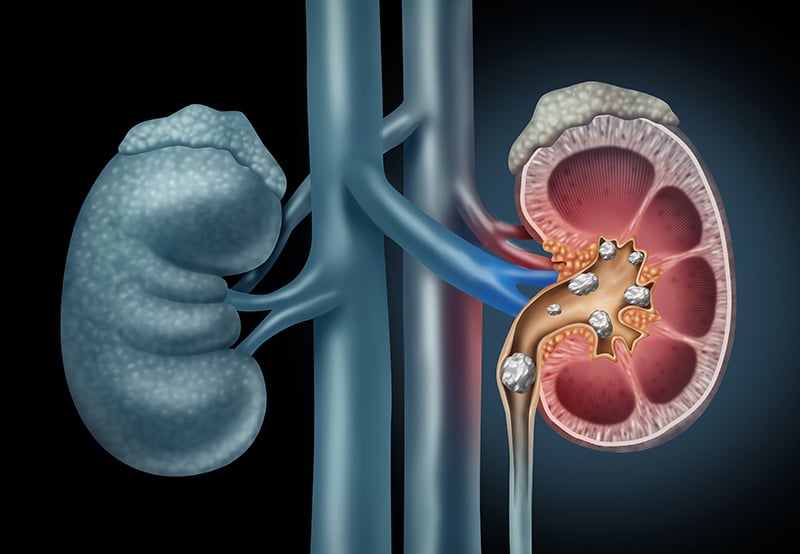Stone
← กลับสู่หน้าหลักUrinary Tract Stones: Theory of Formation, Symptoms, and Incidence

KUB stones refer to hard deposits that form in the kidneys, ureters, or bladder due to an imbalance in minerals and waste products in urine.
Theory of Stone Formation
1. Supersaturation
When urine contains high levels of calcium, oxalate, or uric acid, these substances crystallize and clump together to form stones.
2. Nucleation
Tiny crystals form when certain substances in urine clump together, growing into stones over time.
3. Inhibitor Deficiency
Low levels of protective substances like citrate or magnesium make it easier for stones to form.
4. Randall’s Plaque Theory
Some stones start forming on tiny calcium deposits in the kidney tissue (Randall's plaques).
Symptoms
Pain in the back or side (kidney stones).
Severe pain in the lower abdomen or groin (ureteral stones).
Burning or painful urination, sometimes with blood in the urine.
Nausea, vomiting, or fever if there’s an infection.
Incidence
Stones are more common in men than women (2–3 times higher risk).
Most cases occur between the ages of 30 and 50.
Common in people who drink little water or live in hot climates.
If you notice these symptoms, seek medical attention to avoid complications.